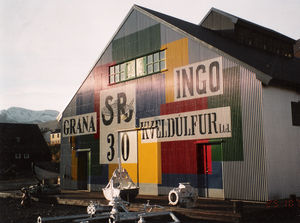Grána
The Grána fish meal and oil factory is a unique exhibition about an important chapter in the economic and social history of Siglufjörður and Iceland. Visiting this 1930's – 1950's era factory, one learns how men and machines transformed herring into meal and oil, and also about the surprising ways in which these valuable products were utilized.
Fish meal and oil production in Iceland
The factory production of fishmeal and -oil began in Iceland at the turn of the century and was the nation's first heavy industry. The industry was so successful that it was often said that the factories were grinding up gold rather than herring! In many cases, factories were constructed at great expense however these costs could be recouped in just two or three seasons of production. Huge factories were built near the abundant herring fishing grounds, within settled areas and also in very isolated locations. For the remote factories such as those in Djúpavík and Ingólfsfjörður, the disappearance of the herring from Iceland's waters in the 1960's reduced them to empty and silent ghost towns. In towns such as Siglufjörður, many factories were torn down to make way for new industry.
A herring reduction museum
Our work has been to breathe life back into these 'ghost factories'. Siglufjörður was Iceland's principal herring processing town and yet very little of the machinery from the town's nine factories survived beyond the 1970's. Our goal is to introduce the public to the heyday of Iceland's herring reduction industry: the 1930's – 1950's. We constructed Grána, a large factory building modeled on the original Grána factory which operated in Siglufjörður between 1919 and 1950. Many years were spent painstakingly dismantling, piece by piece, two of Iceland's most remote ghost factories (those at Ingólfsfjörður and Hjalteyri) then transporting them back to Siglufjörður. The conservation, reassembly, construction and installation of the factory was completed in 2003.

